Abstract
A methanogenic acetate enrichment was initiated by inoculation of an acetate-mineral salts medium with domestic anaerobic digestor sludge and maintained by weekly transfer for 2 years. The enrichment culture contained a Methanosarcina and several obligately anaerobic nonmethanogenic bacteria. These latter organisms formed varying degrees of association with the Methanosarcina, ranging from the nutritionally fastidious gram-negative rod called the satellite bacterium to the nutritionally nonfastidious Eubacterium limosum. The satellite bacterium had growth requirements for amino acids, a peptide, a purine base, vitamin B12, and other B vitamins. Glucose, mannitol, starch, pyruvate, cysteine, lysine, leucine, isoleucine, arginine, and asparagine stimulated growth and hydrogen production. Acetate was neither incorporated nor metabolized by the satellite organism. Since acetate was the sole organic carbon source in the enrichment culture, organism(s) which metabolize acetate (such as the Methanosarcina) must produce substrates and growth factors for associated organisms which do not metabolize acetate.
Full text
PDF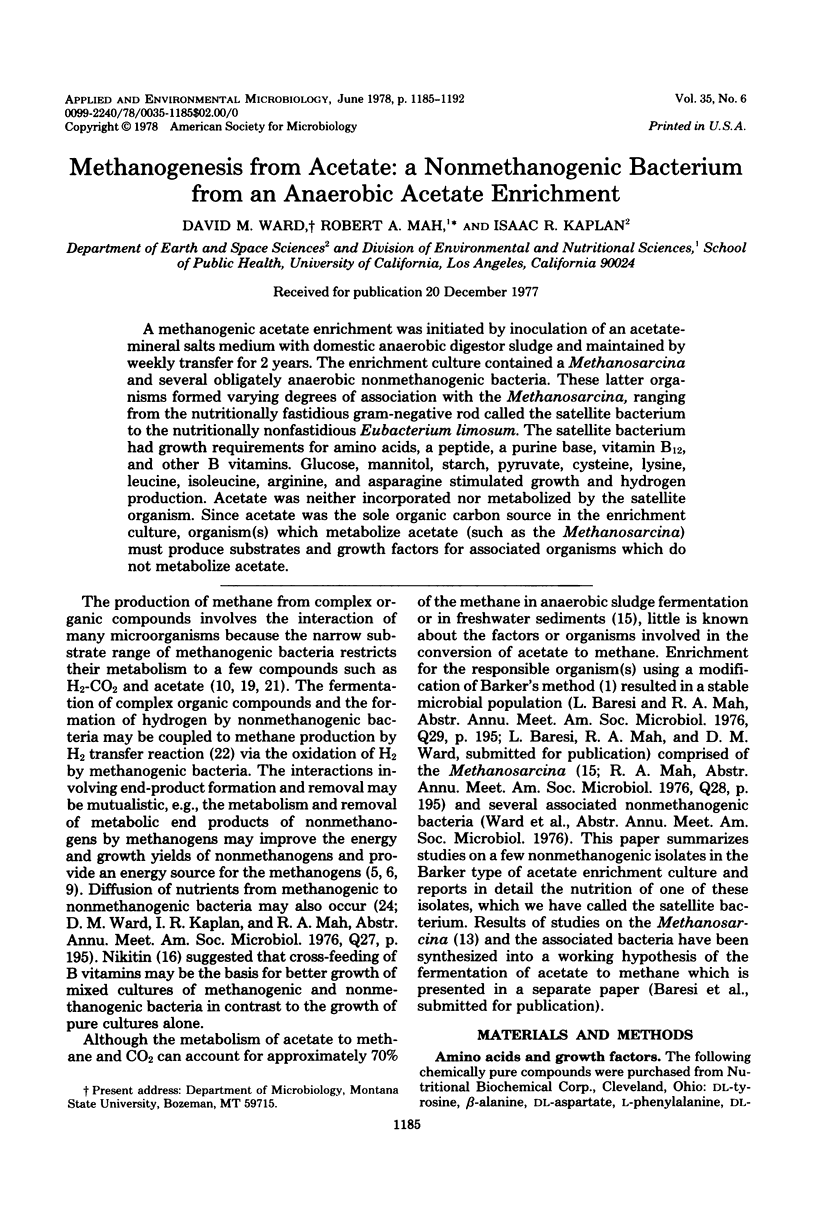
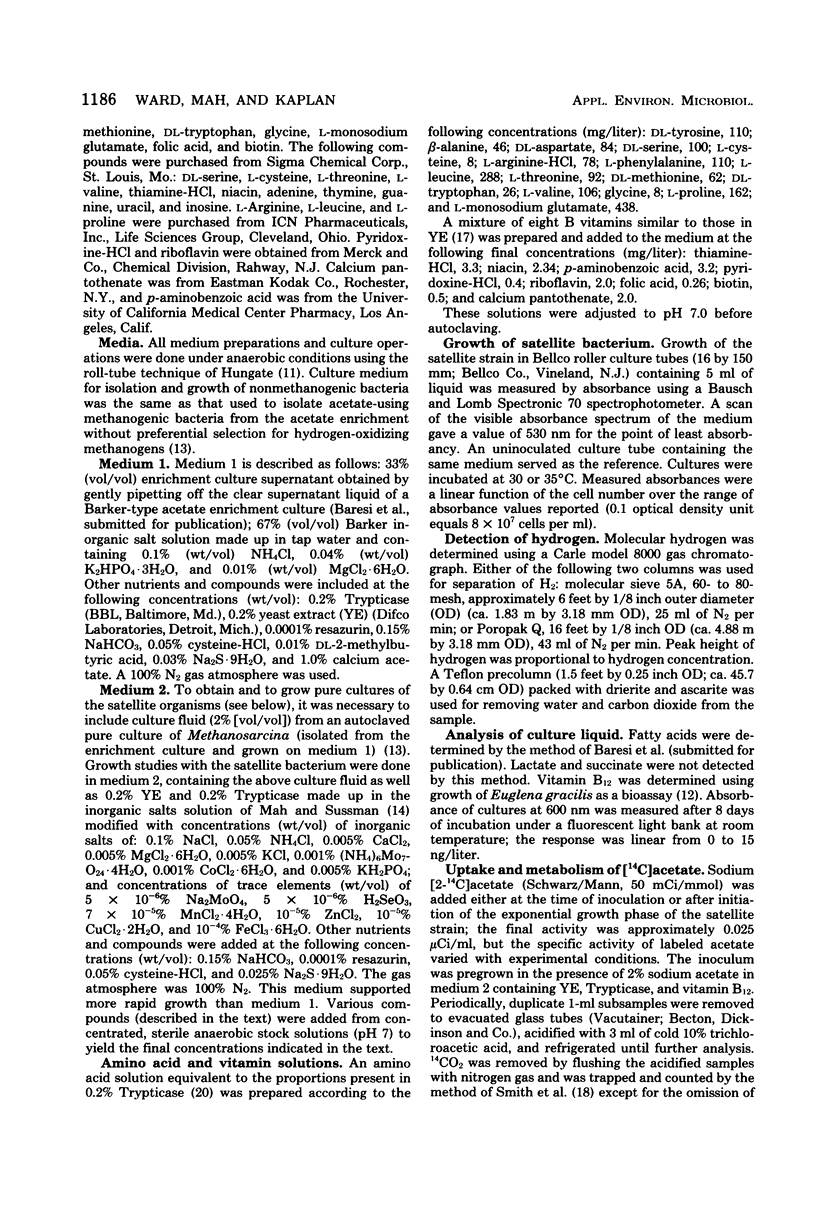
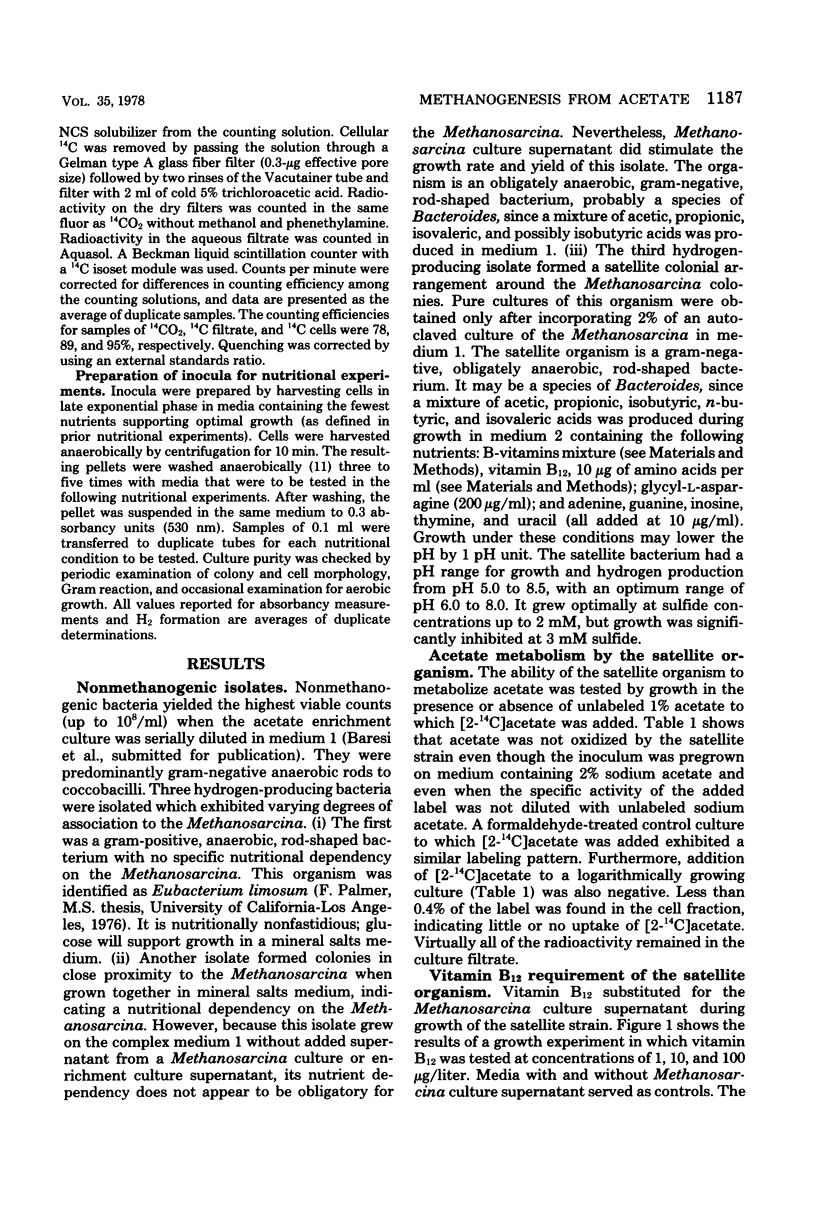
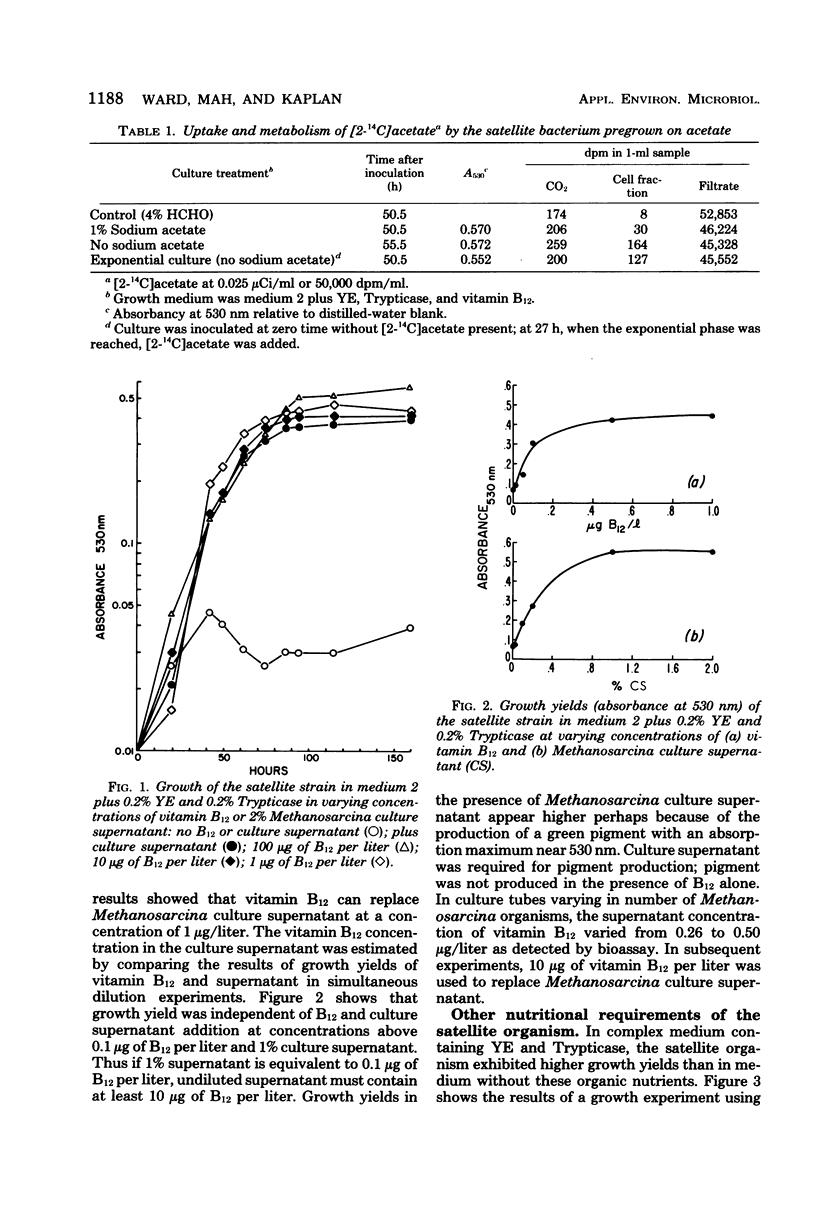
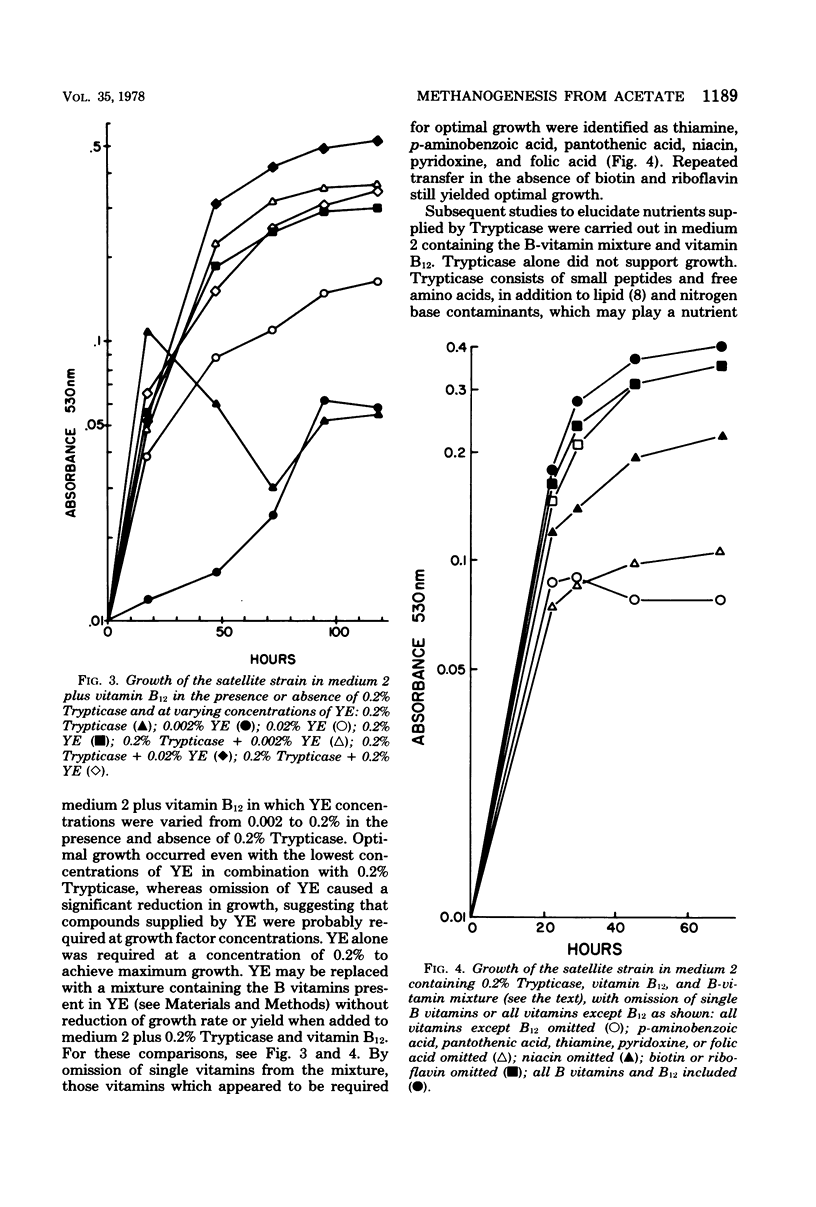

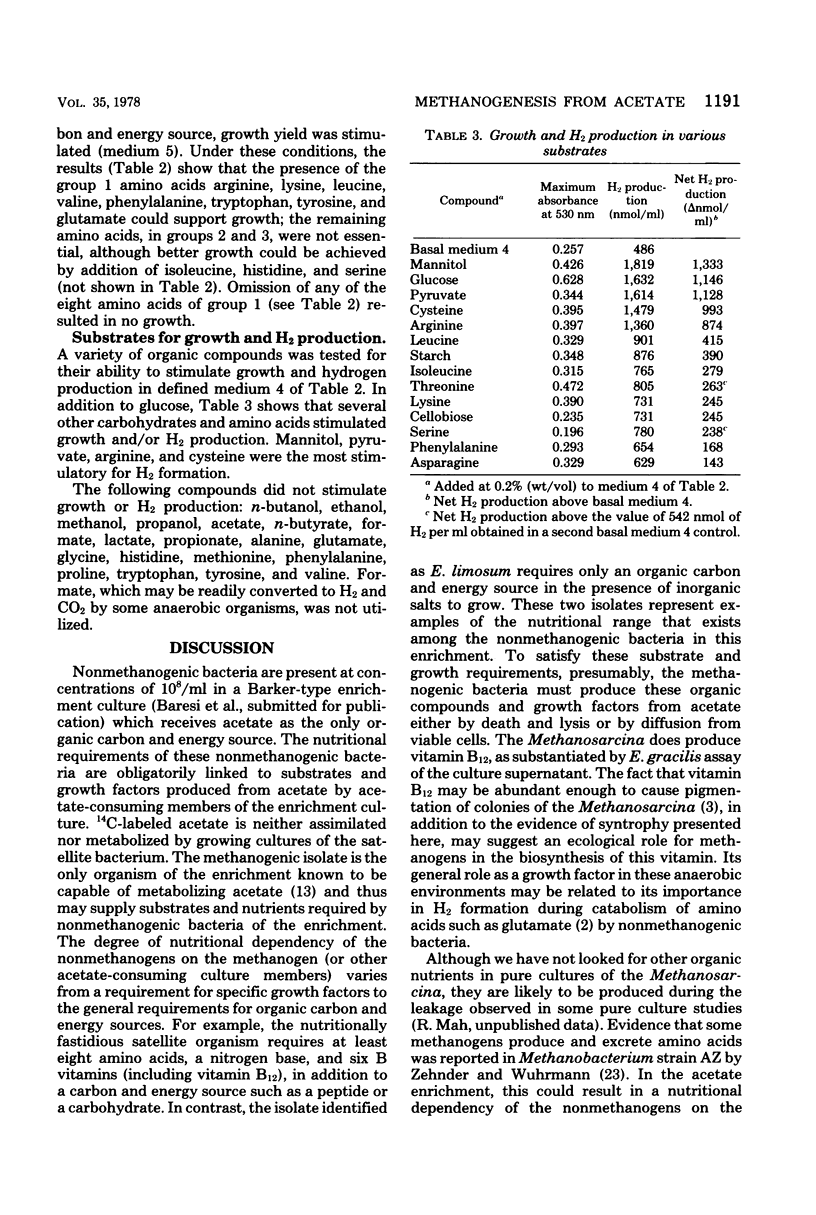
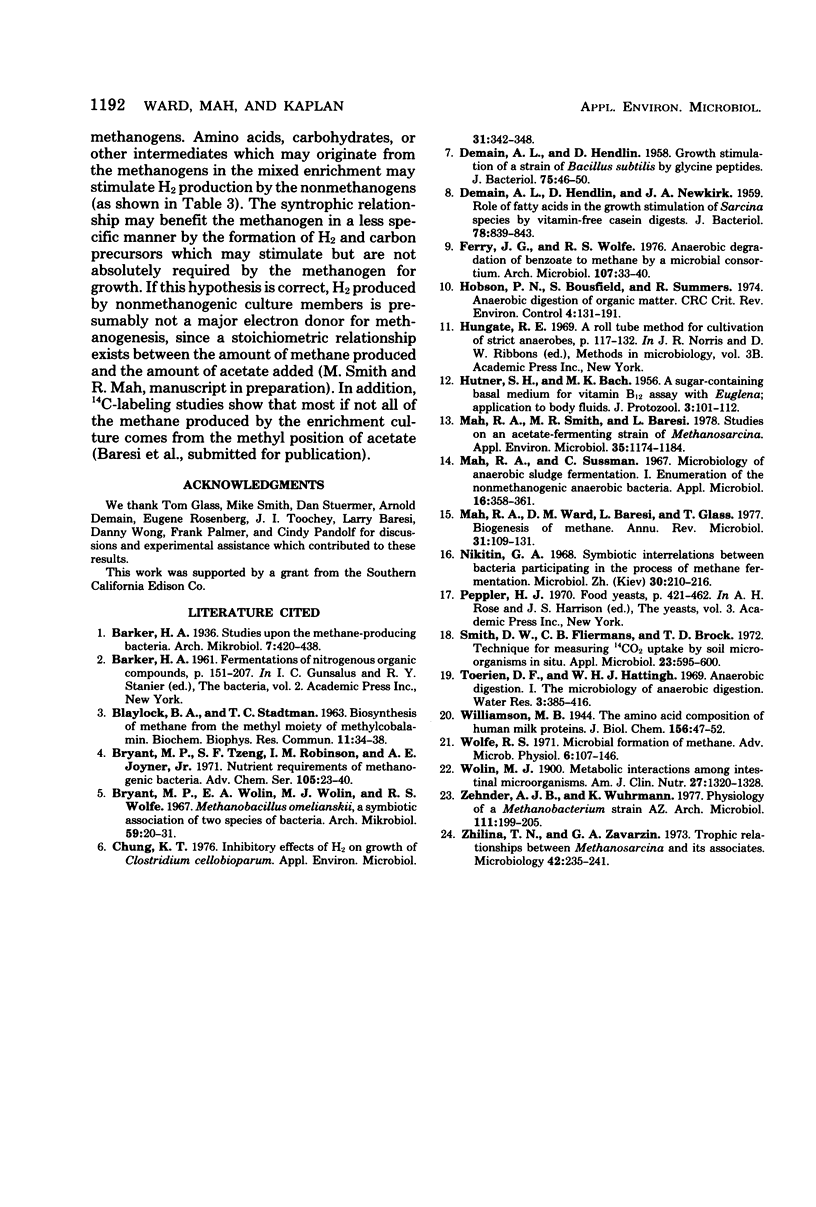
Selected References
These references are in PubMed. This may not be the complete list of references from this article.
- BLAYLOCK B. A., STADTMAN T. C. Biosynthesis of methane from the methyl moiety of methylcobalamin. Biochem Biophys Res Commun. 1963 Apr 2;11:34–38. doi: 10.1016/0006-291x(63)90023-8. [DOI] [PubMed] [Google Scholar]
- Bryant M. P., Wolin E. A., Wolin M. J., Wolfe R. S. Methanobacillus omelianskii, a symbiotic association of two species of bacteria. Arch Mikrobiol. 1967;59(1):20–31. doi: 10.1007/BF00406313. [DOI] [PubMed] [Google Scholar]
- Chung K. T. Inhibitory effects of H2 on growth of Clostridium cellobioparum. Appl Environ Microbiol. 1976 Mar;31(3):342–348. doi: 10.1128/aem.31.3.342-348.1976. [DOI] [PMC free article] [PubMed] [Google Scholar]
- DEMAIN A. L., HENDLIN D. Growth stimulation of a strain of Bacillus subtilis by glycine peptides. J Bacteriol. 1958 Jan;75(1):46–50. doi: 10.1128/jb.75.1.46-50.1958. [DOI] [PMC free article] [PubMed] [Google Scholar]
- DEMAIN A. L., HENDLIN D., NEWKIRK J. A. Role of fatty acids in the growth stimulation of Sarcina species by vitamin-free casein digests. J Bacteriol. 1959 Dec;78:839–843. doi: 10.1128/jb.78.6.839-843.1959. [DOI] [PMC free article] [PubMed] [Google Scholar]
- Ferry J. G., Wolfe R. S. Anaerobic degradation of benzoate to methane by a microbial consortium. Arch Microbiol. 1976 Feb;107(1):33–40. doi: 10.1007/BF00427864. [DOI] [PubMed] [Google Scholar]
- Mah R. A., Smith M. R., Baresi L. Studies on an acetate-fermenting strain of Methanosarcina. Appl Environ Microbiol. 1978 Jun;35(6):1174–1184. doi: 10.1128/aem.35.6.1174-1184.1978. [DOI] [PMC free article] [PubMed] [Google Scholar]
- Mah R. A., Sussman C. Microbiology of anaerobic sludge fermentation. I. Enumeration of the nonmethanogenic anaerobic bacteria. Appl Microbiol. 1968 Feb;16(2):358–361. doi: 10.1128/am.16.2.358-361.1968. [DOI] [PMC free article] [PubMed] [Google Scholar]
- Smith D. W., Fliermans C. B., Brock T. D. Technique for measuring 14 CO 2 uptake by soil microorganisms in situ. Appl Microbiol. 1972 Mar;23(3):595–600. doi: 10.1128/am.23.3.595-600.1972. [DOI] [PMC free article] [PubMed] [Google Scholar]
- Wolfe R. S. Microbial formation of methane. Adv Microb Physiol. 1971;6:107–146. doi: 10.1016/s0065-2911(08)60068-5. [DOI] [PubMed] [Google Scholar]
- Wolin M. J. Metabolic interactions among intestinal microorganisms. Am J Clin Nutr. 1974 Nov;27(11):1320–1328. doi: 10.1093/ajcn/27.11.1320. [DOI] [PubMed] [Google Scholar]


